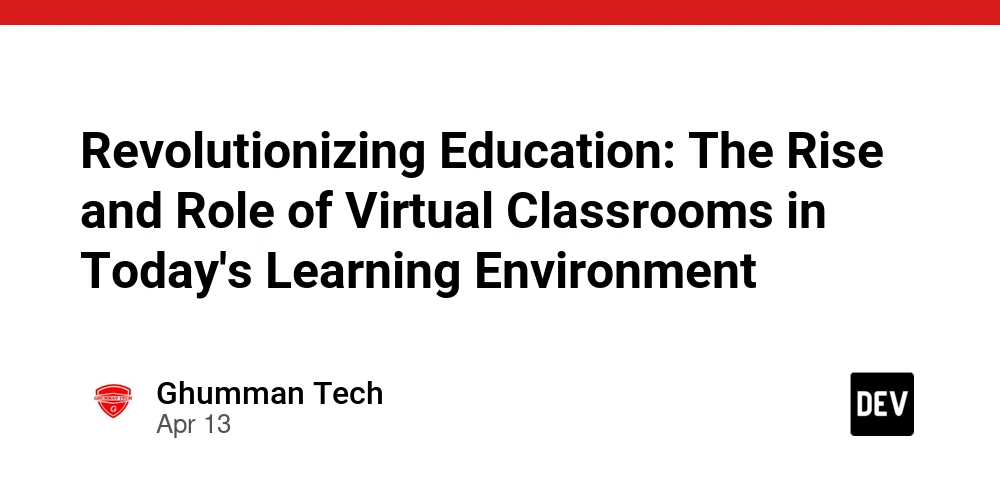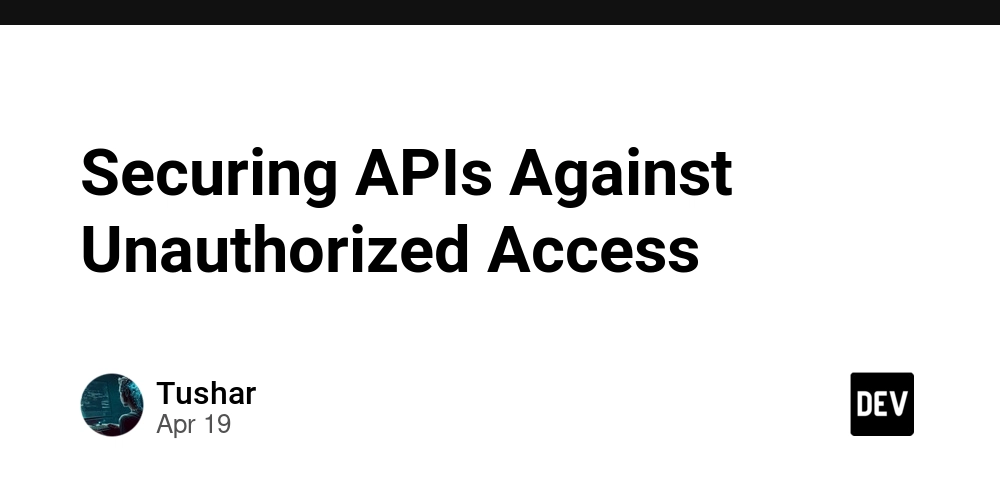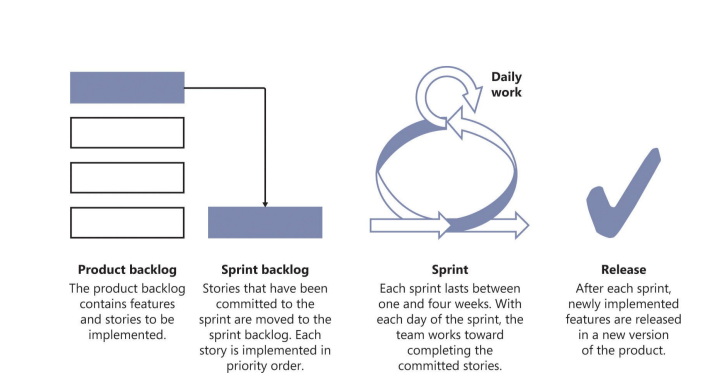Revolutionizing Education: The Rise and Role of Virtual Classrooms in Today's Learning Environment
In our increasingly digitized world, education is continually evolving to meet the demands of technology and society. A significant advancement that has transformed the landscape of our educational system in recent years is the rise of virtual classrooms. These virtual learning environments are playing a pivotal role in modern education, providing efficient, effective, and engaging ways to learn, often transcending barriers of geography, time, and socio-economic factors. At its core, a “virtual classroom” refers to an online learning environment that allows students and teachers to communicate, interact, collaborate, and explain ideas. Many virtual classrooms include features like video and audio conferencing, shared online whiteboards, breakout sessions, and other interactive elements. One of the identifiable roles the virtual classroom plays in contemporary education is that of accessibility. People around the globe can access relevant, high-quality education from their very homes. This is especially beneficial for students in remote or rural areas who would otherwise require long commutes to attend school. Similarly, for adult learners juggling responsibilities like work and family, the flexibility offered by virtual classrooms can be a game-changer. Virtual classrooms are also playing an instrumental role in promoting personalized learning. They enable the learning experience to be tailored according to each student's pace and learning style. This feature is a significant departure from traditional one-size-fits-all classroom settings, where individual students' needs may not always be sufficiently addressed. With the help of advanced technologies like Artificial Intelligence, virtual classrooms can provide students with personalized learning paths. For example, if a student struggles with a specific topic, the virtual learning platform can suggest targeted materials or exercises for additional practice; this empowers students to take control of their learning journey and outcomes. The digital nature of virtual classrooms also helps enhance the authenticity and relevance of learning material, which in turn boosts engagement. With the internet's help, teachers can use a variety of multimedia resources, such as videos, podcasts, infographics, animations, etc., to demonstrate complex concepts. This variety can increase students’ interest and engagement, leading to better retention of knowledge. Moreover, the online engagement and collaboration tools provided by virtual classrooms can improve communication skills and foster a sense of community among students. Digital conferencing, instant messaging, and collaborative project tasks can teach students to work effectively as a team, respect diverse opinions, and develop advanced digital literacy skills essential for the 21st-century workplace. Finally, virtual classrooms are shaping the assessment methods in modern education. Traditional exams are often replaced by digital assessments, including online quizzes, multimedia projects, and interactive presentations. These assessment methods can provide a better, and often immediate, understanding of students' progress and efficacy of teaching methods. Despite these numerous benefits, it’s important to note that virtual classrooms cannot completely replace physical classrooms yet. For instance, they may not successfully translate some aspects of hands-on or face-to-face learning, especially for very young learners. Additionally, accessibility to technology and stable internet connection can be a challenge for many students worldwide. Therefore, an ideal education system may be a blend of traditional and virtual classrooms, with both complementing each other’s strengths and weaknesses. In conclusion, the growing role of virtual classrooms in modern education is unignorable and has the potential to shape the future of global education. Embracing these virtual classrooms can create more flexible, inclusive, personalized, engaging, and effective learning environments. As such, it is crucial to continue investing in ed-tech tools, teacher training, and infrastructures to benefit from virtual classrooms in the fullest manner.

In our increasingly digitized world, education is continually evolving to meet the demands of technology and society. A significant advancement that has transformed the landscape of our educational system in recent years is the rise of virtual classrooms. These virtual learning environments are playing a pivotal role in modern education, providing efficient, effective, and engaging ways to learn, often transcending barriers of geography, time, and socio-economic factors.
At its core, a “virtual classroom” refers to an online learning environment that allows students and teachers to communicate, interact, collaborate, and explain ideas. Many virtual classrooms include features like video and audio conferencing, shared online whiteboards, breakout sessions, and other interactive elements.
One of the identifiable roles the virtual classroom plays in contemporary education is that of accessibility. People around the globe can access relevant, high-quality education from their very homes. This is especially beneficial for students in remote or rural areas who would otherwise require long commutes to attend school. Similarly, for adult learners juggling responsibilities like work and family, the flexibility offered by virtual classrooms can be a game-changer.
Virtual classrooms are also playing an instrumental role in promoting personalized learning. They enable the learning experience to be tailored according to each student's pace and learning style. This feature is a significant departure from traditional one-size-fits-all classroom settings, where individual students' needs may not always be sufficiently addressed. With the help of advanced technologies like Artificial Intelligence, virtual classrooms can provide students with personalized learning paths. For example, if a student struggles with a specific topic, the virtual learning platform can suggest targeted materials or exercises for additional practice; this empowers students to take control of their learning journey and outcomes.
The digital nature of virtual classrooms also helps enhance the authenticity and relevance of learning material, which in turn boosts engagement. With the internet's help, teachers can use a variety of multimedia resources, such as videos, podcasts, infographics, animations, etc., to demonstrate complex concepts. This variety can increase students’ interest and engagement, leading to better retention of knowledge.
Moreover, the online engagement and collaboration tools provided by virtual classrooms can improve communication skills and foster a sense of community among students. Digital conferencing, instant messaging, and collaborative project tasks can teach students to work effectively as a team, respect diverse opinions, and develop advanced digital literacy skills essential for the 21st-century workplace.
Finally, virtual classrooms are shaping the assessment methods in modern education. Traditional exams are often replaced by digital assessments, including online quizzes, multimedia projects, and interactive presentations. These assessment methods can provide a better, and often immediate, understanding of students' progress and efficacy of teaching methods.
Despite these numerous benefits, it’s important to note that virtual classrooms cannot completely replace physical classrooms yet. For instance, they may not successfully translate some aspects of hands-on or face-to-face learning, especially for very young learners. Additionally, accessibility to technology and stable internet connection can be a challenge for many students worldwide. Therefore, an ideal education system may be a blend of traditional and virtual classrooms, with both complementing each other’s strengths and weaknesses.
In conclusion, the growing role of virtual classrooms in modern education is unignorable and has the potential to shape the future of global education. Embracing these virtual classrooms can create more flexible, inclusive, personalized, engaging, and effective learning environments. As such, it is crucial to continue investing in ed-tech tools, teacher training, and infrastructures to benefit from virtual classrooms in the fullest manner.





























![[Webinar] AI Is Already Inside Your SaaS Stack — Learn How to Prevent the Next Silent Breach](https://blogger.googleusercontent.com/img/b/R29vZ2xl/AVvXsEiOWn65wd33dg2uO99NrtKbpYLfcepwOLidQDMls0HXKlA91k6HURluRA4WXgJRAZldEe1VReMQZyyYt1PgnoAn5JPpILsWlXIzmrBSs_TBoyPwO7hZrWouBg2-O3mdeoeSGY-l9_bsZB7vbpKjTSvG93zNytjxgTaMPqo9iq9Z5pGa05CJOs9uXpwHFT4/s1600/ai-cyber.jpg?#)










































































































































![[The AI Show Episode 144]: ChatGPT’s New Memory, Shopify CEO’s Leaked “AI First” Memo, Google Cloud Next Releases, o3 and o4-mini Coming Soon & Llama 4’s Rocky Launch](https://www.marketingaiinstitute.com/hubfs/ep%20144%20cover.png)





























































































































![[FREE EBOOKS] Machine Learning Hero, AI-Assisted Programming for Web and Machine Learning & Four More Best Selling Titles](https://www.javacodegeeks.com/wp-content/uploads/2012/12/jcg-logo.jpg)








































































![Rogue Company Elite tier list of best characters [April 2025]](https://media.pocketgamer.com/artwork/na-33136-1657102075/rogue-company-ios-android-tier-cover.jpg?#)








































































_Andreas_Prott_Alamy.jpg?width=1280&auto=webp&quality=80&disable=upscale#)






























































































![What’s new in Android’s April 2025 Google System Updates [U: 4/18]](https://i0.wp.com/9to5google.com/wp-content/uploads/sites/4/2025/01/google-play-services-3.jpg?resize=1200%2C628&quality=82&strip=all&ssl=1)










![Apple Watch Series 10 Back On Sale for $299! [Lowest Price Ever]](https://www.iclarified.com/images/news/96657/96657/96657-640.jpg)
![EU Postpones Apple App Store Fines Amid Tariff Negotiations [Report]](https://www.iclarified.com/images/news/97068/97068/97068-640.jpg)
![Apple Slips to Fifth in China's Smartphone Market with 9% Decline [Report]](https://www.iclarified.com/images/news/97065/97065/97065-640.jpg)




































































































































